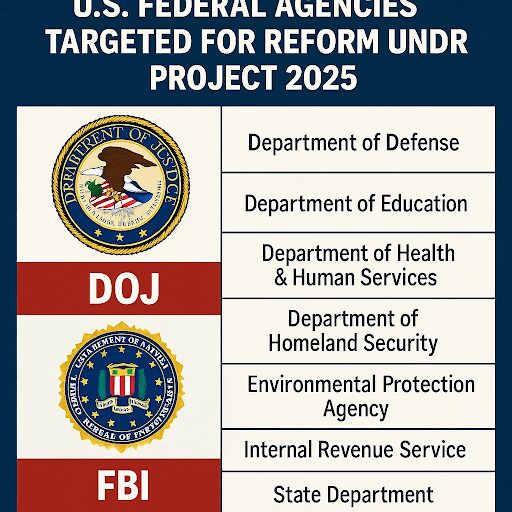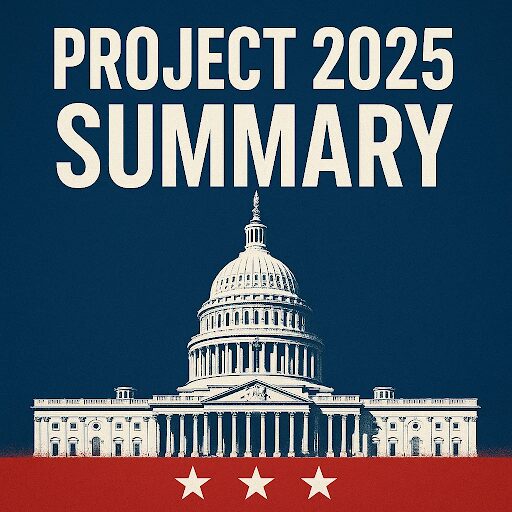What is Project 2025?
Republican Project 2025 Summary, also known as the 2025 Presidential Transition Project, is a detailed plan to overhaul the U.S. federal government. Launched in April 2023 by the Heritage Foundation, it aims to consolidate executive power and implement right-wing policies, potentially under a Republican president in 2025. The plan is rooted in the unitary executive theory, suggesting the president has full control over the executive branch, which could reduce checks and balances.
Who’s Involved?
The Heritage Foundation, a leading conservative think tank, spearheads Project 2025, with former director Paul Dans and current president Kevin Roberts at the helm. Over 140 former Trump administration officials and more than 100 conservative organizations contributed, aligning it closely with Republican agendas, though former President Trump has publicly distanced himself from some proposals.
Why It’s Significant
The plan’s proposals, like dismantling agencies and cutting social programs, could reshape governance, impacting millions. Critics, including the ACLU, argue it threatens democracy, while supporters claim it addresses bureaucratic overreach. Its influence on policy debates makes it a critical topic for 2025.
Understanding Project 2025
Overview of Project 2025
Project 2025 Summary, launched on April 21, 2022, by the Heritage Foundation, is a comprehensive 900-page policy agenda titled Mandate for Leadership: The Conservative Promise. It aims to reshape the U.S. federal government by consolidating executive power and advancing right-wing policies, particularly in anticipation of a Republican victory in the 2024 presidential election. The initiative, also called the 2025 Presidential Transition Project, is the ninth iteration of the Heritage Foundation’s Mandate for Leadership series, which has guided Republican administrations since 1981. Its core philosophy is based on the unitary executive theory, which asserts that the president has complete control over the executive branch, potentially reducing the influence of checks and balances.
Core Objectives
Project 2025’s stated goals include restoring the family, dismantling the administrative state, defending national sovereignty, and securing individual rights. Its four pillars are:
- Mandate for Leadership: A 900-page policy document detailing reforms.
- Personnel Database: Plans to recruit 20,000 loyalists by 2024 to replace federal workers.
- Presidential Administration Academy: Training for appointees to implement the agenda.
- 180-Day Playbook: A confidential strategy for immediate action post-inauguration.
The plan proposes replacing merit-based civil servants with loyalists, controlling agencies like the DOJ and FBI, and dismantling the Department of Homeland Security and Department of Education. It also advocates for a flat income tax (15% up to $168,600, 30% above), cutting Medicare and Medicaid, and reversing Biden-era policies.

Key Policy Proposals
Project 2025’s policies span multiple sectors, drawing both support and criticism:
- Government Restructuring: Eliminate the Department of Education and Commerce, reduce the size of the federal workforce by up to 50,000, and reinstate Schedule F to reclassify civil servants as at-will employees.
- Economic Policies: Introduce a flat tax, cut social programs like Medicare and Medicaid, and reduce regulations on fossil fuels.
- Social Policies: Criminalize pornography, end DEI programs, remove LGBTQ+ protections, and enact Christian nationalist laws, including restrictions on abortion and emergency contraception.
- Immigration: Propose mass deportations and domestic use of the U.S. Armed Forces to enforce immigration laws.
These policies aim to align government with conservative values but have raised concerns about their impact on vulnerable populations and democratic norms.
Criticisms and Controversies
Critics, including the ACLU and Center for American Progress, label Project 2025 as authoritarian and a threat to democracy. Key concerns include:
- Erosion of Checks and Balances: The unitary executive theory could undermine the separation of powers, giving the president unchecked authority.
- Civil Liberties: Proposals to criminalize abortion, remove LGBTQ+ protections, and prosecute “anti-white racism” threaten civil rights.
- Christian Nationalism: Policies promoting Christian values risk violating the separation of church and state.
- Economic and Social Impacts: Cuts to social programs could affect 40 million food assistance recipients and 2.8 million students, per NEA estimates, while environmental deregulation may harm public health.
Why Project 2025 Matters
Project 2025’s potential to reshape governance makes it a critical topic. Its proposals could affect millions through cuts to education (2.8 million students impacted), healthcare (40 million on Medicaid), and environmental protections. The plan’s emphasis on executive power raises questions about democratic norms, while its social policies spark debates over civil liberties. As a roadmap for a potential Republican administration, it demands public scrutiny to understand its implications for America’s future.
Pros and Cons of Project 2025
Pros
- Government Efficiency: Supporters claim reducing bureaucracy could streamline operations and align policies with conservative values.
- Policy Alignment: The plan ensures federal actions reflect the priorities of a Republican administration.
- Rapid Implementation: The 180-day playbook enables quick policy changes post-inauguration.
Cons
- Authoritarian Risk: Critics warn that centralizing power could lead to autocracy, undermining democratic checks.
- Civil Rights Concerns: Policies targeting LGBTQ+ rights, abortion, and DEI threaten inclusivity.
- Economic and Social Harm: Cuts to social programs and environmental regulations could harm vulnerable groups and public health.
FAQs About Project 2025
What is the main goal of Project 2025?
It seeks to centralize executive power, reduce federal bureaucracy, and implement conservative policies, potentially reshaping U.S. governance.
Who funds Project 2025?
The Heritage Foundation, with a $22 million budget, leads the initiative, supported by over 100 conservative organizations.
How is Trump connected to Project 2025?
Though Trump distanced himself, many contributors were his former staff, and his 2025 actions align with the plan’s proposals.
Conclusion: Stay Informed and Engaged
Project 2025 is a polarizing blueprint that could redefine American governance. Its ambitious reforms, from restructuring agencies to enacting conservative social policies, spark debate over efficiency versus authoritarianism. As its influence grows in 2025, understanding its implications is vital for informed citizenship. Explore the plan of Project 2025 Summary or read critical analyses at ACLU. Share your thoughts in the comments—does Project 2025 align with your vision for America’s future?

































